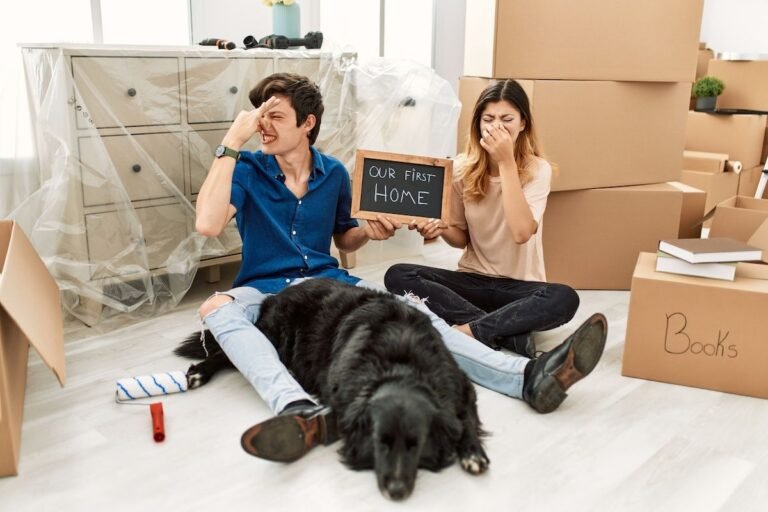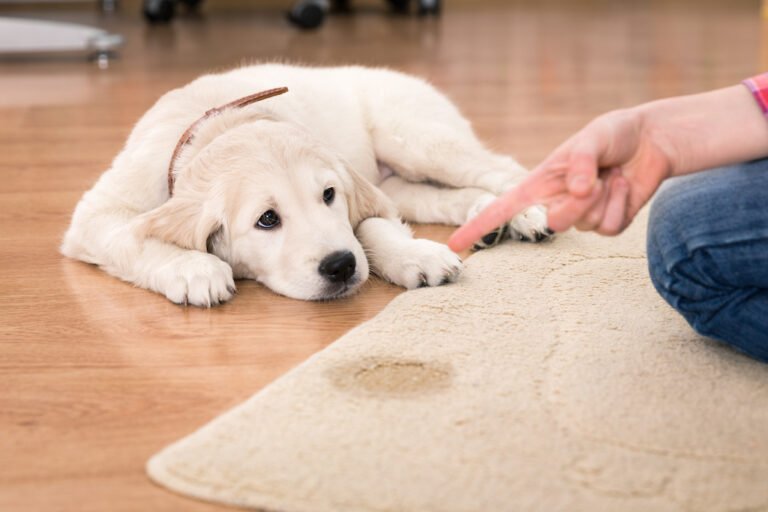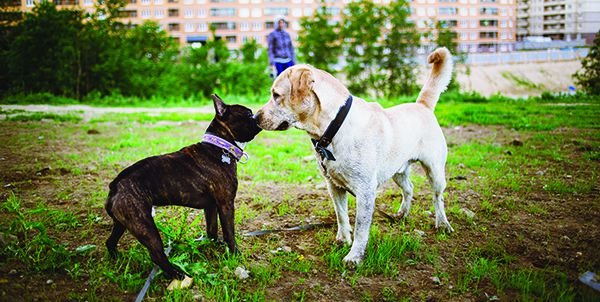How To Make Your Dog Comfortable With Your Guests
How do I get my dog to like visitors?
Getting your dog to like visitors and be comfortable around new people can be a gradual process, especially if your dog is naturally shy, anxious, or has had negative experiences in the past. Here are steps to help your dog become more accepting of visitors:
- Socialization: Proper socialization is key to helping your dog feel comfortable around people and other dogs. If your dog is a puppy, expose them to a variety of people, places, and experiences early on. If your dog is older, it’s still possible to work on socialization.
- Positive Associations: When visitors come over, encourage them to bring treats or toys for your dog. Ask your guests to give your dog treats and engage in play. This will help your dog associate visitors with positive experiences.
- Set the Right Environment: Create a comfortable, welcoming space for your dog and your guests. Provide a designated area where your dog can retreat to if they feel overwhelmed. This can be a crate, a quiet room, or a specific corner with your dog’s bed.
- Gradual Exposure: Introduce your dog to visitors gradually. Start with brief visits from people your dog is already familiar with. As your dog becomes more comfortable, gradually increase the duration and introduce new visitors.
- Use Basic Commands: Basic obedience commands, such as “sit” and “stay,” can be useful in managing your dog’s behavior around visitors. Training your dog to obey commands can help you control their actions and reactions.
- Positive Reinforcement: Use positive reinforcement techniques to reward your dog for calm and relaxed behavior around visitors. Treats, praise, and petting can be effective rewards.
- Respect Your Dog’s Signals: Pay attention to your dog’s body language. If they show signs of stress or discomfort, such as pacing, growling, or cowering, give them space and time to adjust. Avoid forcing interactions.
- Desensitization: Gradually desensitize your dog to the arrival and departure of visitors. Practice simulated visits where you or a family member pretend to be guests. Reward your dog for calm behavior during these exercises.
- Consult a Professional: If your dog’s fear or anxiety around visitors is severe, consider consulting a professional dog trainer or behaviorist. They can provide guidance and training techniques tailored to your dog’s specific needs.
- Consistency: Be consistent in your approach to training and socialization. Regular practice and exposure to visitors will help your dog become more comfortable over time.
Remember that not all dogs will be social butterflies, and some may always be a bit reserved around visitors. That’s okay as long as your dog is not anxious or aggressive. The goal is to ensure that your dog feels safe and secure, and that visitors can interact with them in a positive and stress-free manner. Patience, positive reinforcement, and gradual exposure are key components of achieving this goal.
How do I stop my dog going crazy when guests come over?
Addressing a dog’s excitement or exuberance when guests come over involves a combination of training, management, and positive reinforcement. Here are some tips to help you manage your dog’s behavior and create a calmer environment when guests arrive:
- Basic Obedience Training:
- Ensure your dog has a solid foundation in basic obedience commands such as “sit,” “stay,” and “down.” This provides a way to redirect your dog’s energy and maintain control during exciting situations.
- Create a Calm Environment:
- Establish a calm environment before guests arrive. Avoid getting your dog overly excited by maintaining a relaxed atmosphere.
- Prevent Jumping:
- If your dog tends to jump on guests, work on preventing this behavior. Teach your dog an alternative behavior, such as sitting, and reward them for remaining calm.
- Use a Leash or Tether:
- Keep your dog on a leash or tether when guests arrive to prevent jumping or excessive excitement. This allows you to control your dog’s behavior and gives them a chance to calm down.
- Train a “Place” Command:
- Teach your dog a “place” command, where they go to a designated area and stay until given permission. This provides a clear boundary and helps manage their behavior when guests are present.
- Desensitize to Arrival Cues:
- Gradually desensitize your dog to arrival cues, such as doorbell rings or knocks. Use recorded sounds at a low volume and reward calm behavior. Gradually increase the volume as your dog becomes more comfortable.
- Practice with Familiar Guests:
- Arrange practice sessions with friends or family members whom your dog knows well. This can help reinforce calm behavior in the presence of guests.
- Reward Calm Behavior:
- Reward your dog for calm behavior when guests arrive. Use treats, praise, or toys to reinforce the behavior you want to see.
- Provide Mental Stimulation:
- Provide mental stimulation for your dog before guests arrive. Engage them in activities such as puzzle toys or short training sessions to help channel their energy.
- Use a Safe Space:
- Create a designated safe space for your dog where they can retreat if they feel overwhelmed. This could be a comfortable crate or a quiet room.
- Be Consistent:
- Consistency is key. Enforce the same rules and expectations with every guest visit to reinforce good behavior.
- Consider Professional Training:
- If your dog’s excitement remains a significant challenge, consider seeking guidance from a professional dog trainer or behaviorist. They can provide personalized advice and training techniques.
Remember that patience and positive reinforcement are crucial when training your dog. Consistent training and creating positive associations with guests will help your dog learn to remain calm during social situations.
What to do with your dog when you have guests?
When you have guests over, it’s important to ensure that your dog behaves well and feels comfortable in the presence of strangers. Here are some tips on what to do with your dog when you have guests:
- Prepare Your Dog:
- Before guests arrive, ensure that your dog is well-exercised and has had an opportunity to go to the bathroom. A tired dog is often a calmer and more well-behaved dog.
- Create a Safe Space:
- Set up a comfortable and quiet space for your dog where they can retreat if they feel overwhelmed. This could be a designated room, a cozy crate, or a specific area with their bed and favorite toys.
- Use a Leash or Tether:
- If your dog tends to get overly excited or jumps on guests, consider keeping them on a leash or tether during the initial greetings. This allows you to have better control over their behavior.
- Practice Obedience Commands:
- Reinforce basic obedience commands such as “sit,” “stay,” and “down.” These commands provide you with control and allow you to redirect your dog’s attention.
- Introduce Guests Gradually:
- If your dog is not used to having guests, introduce them gradually. Allow your dog to approach guests at their own pace, and avoid overwhelming interactions.
- Reward Calm Behavior:
- Reward your dog for calm behavior around guests. Use treats, praise, or toys to reinforce positive interactions. Ignore or redirect undesirable behavior.
- Set Ground Rules:
- Communicate ground rules to your guests regarding how to interact with your dog. For example, ask them not to feed your dog without permission and to avoid sudden movements.
- Monitor Body Language:
- Pay attention to your dog’s body language. If they show signs of stress or discomfort, give them a break and allow them to retreat to their safe space.
- Use Treats and Positive Reinforcement:
- Encourage your guests to offer treats to your dog, promoting positive associations. However, remind them not to force interactions if your dog seems hesitant.
- Provide Entertainment:
- Keep your dog entertained with toys or puzzle feeders to help distract them and reduce anxiety.
- Be Mindful of Children:
- If there are children present, ensure they understand how to interact with your dog safely. Supervise their interactions and teach them to approach slowly and calmly.
- Consider Professional Training:
- If your dog has persistent behavior issues during guest visits, consider seeking advice from a professional dog trainer or behaviorist.
Remember that every dog is unique, and what works for one may not work for another. Understanding your dog’s individual needs and behavior is crucial in creating a positive and stress-free environment when guests are around. Consistency and positive reinforcement are key elements in training and managing your dog’s behavior during social situations.
How do I train my dog to be calm when visitors come?
Training your dog to be calm when visitors arrive involves a combination of obedience training, desensitization, and positive reinforcement. Here’s a step-by-step guide to help you train your dog to remain calm during guest visits:
1. Basic Obedience Commands:
- Ensure your dog is well-versed in basic commands such as “sit,” “stay,” and “down.” These commands provide a foundation for controlling your dog’s behavior.
2. Desensitize to Arrival Cues:
- Gradually desensitize your dog to the cues associated with guests arriving, such as doorbell rings or knocks. Use recorded sounds at a low volume and reward calm behavior. Gradually increase the volume as your dog becomes more comfortable.
3. Create a Safe Space:
- Designate a quiet and comfortable space for your dog where they can retreat if they feel overwhelmed. This could be a specific room, a cozy crate, or a designated area with their bed and toys.
4. Practice with Familiar Guests:
- Arrange practice sessions with friends or family members whom your dog knows well. This allows your dog to associate positive experiences with guests and reinforces calm behavior.
5. Leash Training:
- Keep your dog on a leash when guests arrive to prevent jumping or excessive excitement. Use the leash to guide your dog into a “sit” or “down” position and reward them for calm behavior.
6. Reward Calm Behavior:
- Use treats, praise, or toys to reward your dog for staying calm when guests arrive. Reinforce the behavior you want to see, and be consistent with positive reinforcement.
7. Train a “Go to Your Place” Command:
- Teach your dog a “place” command, where they go to a designated spot and stay until given permission. This provides a clear boundary and helps manage their behavior during guest visits.
8. Consistent Rules:
- Communicate consistent rules for guests regarding how to interact with your dog. For example, ask guests not to encourage jumping or overly excited behavior.
9. Use Calming Signals:
- Use calming signals, such as slow movements and a calm voice, to communicate with your dog. Avoid reinforcing excited behavior with overly enthusiastic reactions.
10. Maintain a Calm Demeanor:
- Dogs often mirror their owners’ energy. Stay calm and composed during guest visits to help your dog feel at ease.
11. Manage Excitement Threshold:
- Watch for signs of increasing excitement in your dog, and intervene before it escalates. Redirect their attention to a calm activity or command.
12. Seek Professional Guidance:
- If your dog’s excitement remains a significant challenge, consider seeking guidance from a professional dog trainer or behaviorist. They can provide personalized advice and training techniques.
Consistency is crucial in training, and practicing regularly will help reinforce the desired behavior. Over time, with patience and positive reinforcement, your dog can learn to remain calm and well-behaved when guests visit.
Why is my dog aggressive towards visitors?
Dog aggression towards visitors can have various underlying causes, and understanding the root of the behavior is crucial for addressing and managing it effectively. Here are some common reasons why a dog may exhibit aggression towards visitors:
Fear or Anxiety:
- Fear or anxiety can trigger aggressive behavior in dogs. Your dog may feel threatened or overwhelmed by the presence of strangers, leading to defensive aggression.
Territorial Behavior:
- Dogs are territorial animals, and some may become protective of their home and family. Aggression towards visitors can be a result of a perceived threat to their territory.
Lack of Socialization:
- Dogs that have not been adequately socialized with various people and situations during their early development stages may be more prone to fear-based aggression towards strangers.
Protective Instincts:
- Some breeds or individual dogs may have strong protective instincts, and they may exhibit aggression to protect their owners or property.
Medical Issues:
- Pain or discomfort due to underlying health issues can lead to defensive aggression. If your dog’s behavior changes suddenly, it’s essential to rule out any potential medical causes.
Previous Negative Experiences:
- Dogs that have had negative or traumatic experiences with strangers in the past may develop aggression as a defensive mechanism to avoid perceived threats.
Lack of Training and Boundaries:
- Dogs that have not received proper training or lack clear boundaries may display aggression as a way to assert control or dominance over their environment.
Resource Guarding:
- Aggression towards visitors may occur if a dog is possessive of resources, such as food, toys, or resting areas, and perceives a threat to those resources.
Lack of Communication:
- Dogs may use aggressive behavior as a form of communication when they feel their warnings (such as growling or barking) are not heeded. This can escalate to aggression if not addressed appropriately.
Maternal or Pack Protective Instincts:
- Female dogs with maternal instincts or dogs with strong pack instincts may display aggression towards perceived threats to their family or pack.
Addressing Aggression:
- Consult with a professional dog trainer or behaviorist to assess your dog’s behavior and develop a tailored training plan.
- Gradual desensitization and counterconditioning can help change your dog’s emotional response to visitors.
- Implement positive reinforcement techniques to reward calm behavior and obedience.
- Create a positive association with visitors by having them offer treats or engage in play.
- Manage the environment to prevent situations that trigger aggression while working on behavior modification.
If your dog is displaying aggressive behavior towards visitors, especially if the aggression is severe or unpredictable, it’s advisable to seek professional help. A qualified dog trainer or behaviorist can provide guidance and develop a customized behavior modification plan based on your dog’s specific needs and triggers. Additionally, consulting with a veterinarian to rule out any underlying health issues is crucial in addressing aggressive behavior.
Why is my dog scared of guests?
A dog being scared of guests can be due to various reasons, and understanding the underlying cause is essential for addressing and alleviating their fear. Here are some common reasons why a dog may be scared of guests:
Lack of Socialization:
- Dogs that have not been adequately socialized with a variety of people, environments, and experiences during their critical developmental periods may become fearful or anxious in unfamiliar situations.
Negative Past Experiences:
- If a dog has had negative or traumatic experiences with strangers or guests in the past, they may associate the arrival of visitors with fear or anxiety.
Fear of the Unknown:
- Dogs are naturally cautious creatures, and the presence of strangers may trigger fear simply because they represent the unknown. Dogs may be afraid of new people until they learn that guests are not a threat.
- Lack of Positive Associations:
- If interactions with guests have not been associated with positive experiences, such as treats, play, or praise, a dog may develop fear or apprehension towards new people.
Territorial Instincts:
- Some dogs have strong territorial instincts and may become scared or defensive when unfamiliar people enter their perceived territory.
Changes in Environment:
- Changes in the home environment, such as moving to a new location or changes in the household, can contribute to a dog’s fear of guests. They may feel unsettled or insecure in a new setting.
Anxiety or Insecurity:
- Dogs that are naturally anxious or insecure may be more prone to fearfulness in novel situations, including the arrival of guests.
Human Body Language:
- Dogs are highly attuned to human body language and emotions. If guests exhibit nervousness, loudness, or unpredictable behavior, a sensitive dog may pick up on these cues and become scared.
Medical Issues:
- Pain or discomfort due to underlying health issues can contribute to a dog’s fearfulness. If your dog’s behavior changes suddenly, it’s essential to rule out any potential medical causes.
Addressing Fear of Guests:
- Positive Associations: Create positive associations with guests by having them offer treats, play, or engage in calm and non-threatening interactions with your dog.
- Gradual Exposure: Gradually expose your dog to guests in a controlled and positive manner. Allow them to approach at their own pace, and avoid overwhelming interactions.
- Use Treats and Rewards: Reward calm behavior with treats and praise. Encourage guests to toss treats to your dog, helping to create positive associations.
- Provide a Safe Space: Create a safe and comfortable space for your dog where they can retreat if they feel scared. This could be a designated room with their bed, toys, and water.
- Professional Help: If your dog’s fear of guests is severe or persistent, consider seeking the assistance of a professional dog trainer or behaviorist for a tailored behavior modification plan.
Understanding your dog’s individual temperament and addressing their fear with patience and positive reinforcement can help them become more comfortable and confident around guests over time.







